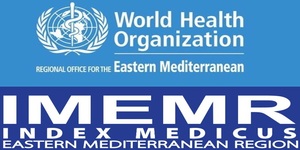Study of Physical Growth Pattern in Thalassemic Children And Adolescent in Hawler Thlassemia Center /Erbil City
DOI:
https://doi.org/10.36321/kjns.vi20142.2568Keywords:
Thalassaemia, growth retardation, height, weight and growth patternAbstract
Background: Thalassemia is one of the most common genetic blood disorders in the world. Growth impairment is a common observable complication and usually found a growth retardation in those patients.
Objectives: The study aimed to identify the Physical growth pattern of Thalassemic (case group) with healthy school (control group) children and adolescents in Erbil city.
Methodology: A study was carried out at Hawler Thalassemia Center in Erbil City during the period of 1/ 2/ 2012 to 30/ 9/ 2012. Fifty Thalassemic children (case group) from Hawler Thalassemia Center in Erbil City and two hundred healthy school (control group) children and adolescents were selected. A questionnaire was designed that composed of two parts to deal with physical growth pattern the data were collected by searchers to interviewed the participants in Hawler Thalassemic Center and secondary schools, for children and adolescents in Erbil city and the data were the analysis by using the (SPSS, 17 ),
Results: The results found that the range of age in the study sample was between 8-11 years old, which present in healthy school children and adolescents (control group) (46.5%), while in Thalassemic children (study group) was (52.0%), the highest percentage of gender in both groups were male ( 65.5% , 58.0%) respectively revealed that there was significant differences in comparative physical growth pattern between Thalassemic and healthy children and adolescents.
Conclusion: The study conclude that Thalassemic children (Case group) regarding the age they have high mean score than control group (healthy child) in (sitting and standing) height, weight and nutritional status as BMI in all age groups.
Recommendation: The study recommended that Thalassemia was a important health problem in pediatric and plans need to set up to reduce the number of cases born by development of population screening programmer and awareness creating
Downloads
Downloads
Published
How to Cite
Issue
Section
License
Copyright (c) 2015 Kareema Ahmed hussein/ Nazar Ramadhan Othman Kaify Jamil Qadir

This work is licensed under a Creative Commons Attribution 4.0 International License.













